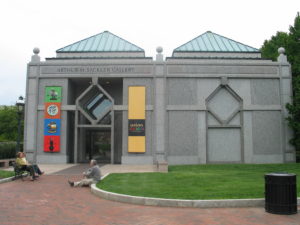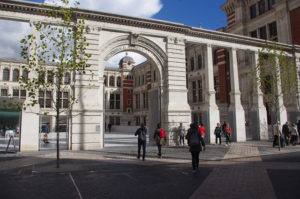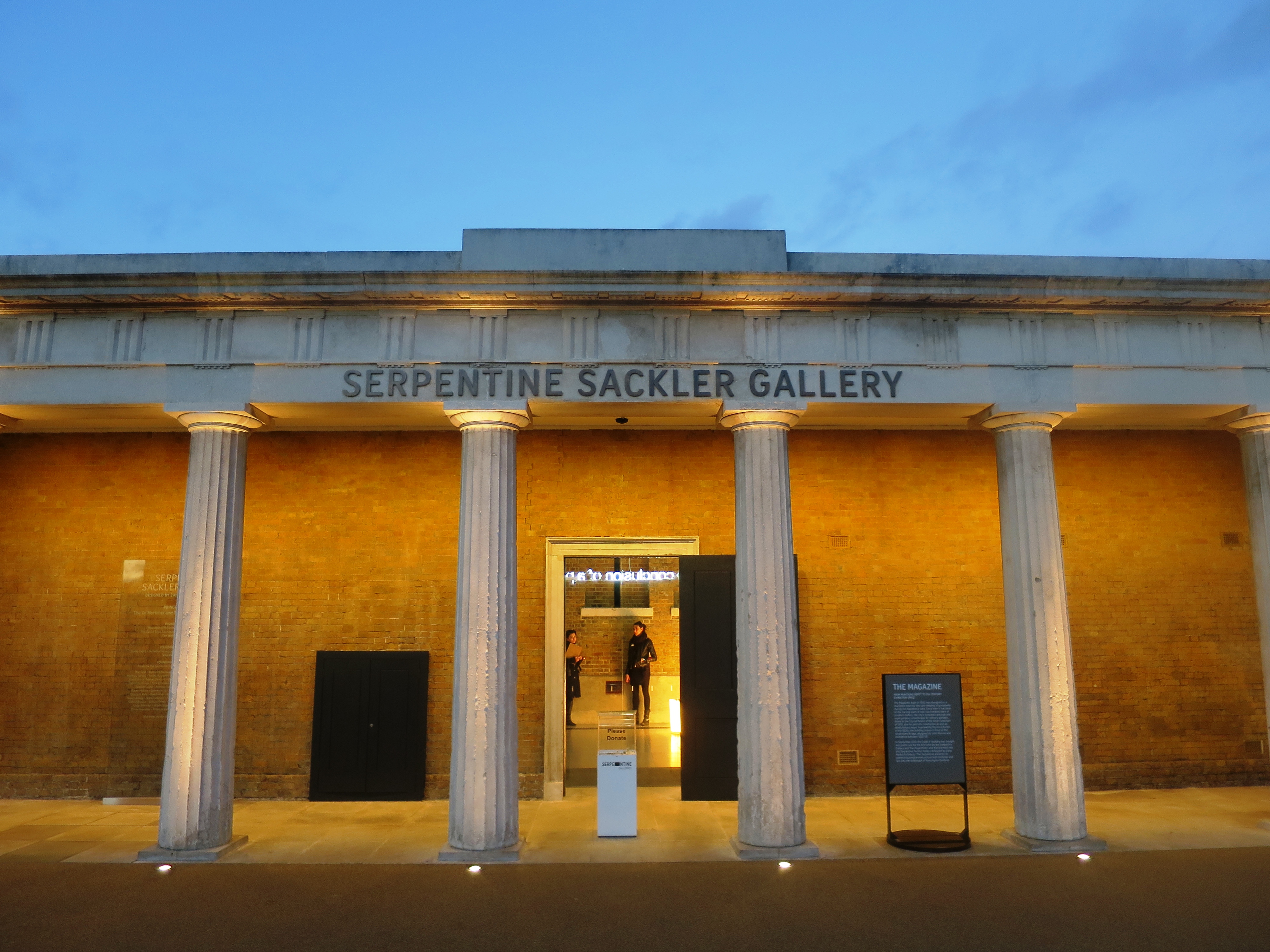28 March 2018
The Future of Philanthropy
The Sackler Effect
By Lynda Goetz
 Nan Goldin, American activist and photographer, has an exhibition coming up in London in October. It will take place at the Goodman Gallery, as Marian Goodman has taken over Goldin’s representation. There was to have been an exhibition at the National Portrait Gallery (NPG)*, but in February Goldin declared she would refuse a prestigious retrospective there if the gallery accepted a £1 million donation from the Sackler family. Sackler is a name well-known in the art world, not for their art, but for their philanthropy. It is a name which appears, for example, amongst key donors at the Royal Opera House, at the V&A and at the National Theatre. At the Royal Academy there is the Sackler Wing, named in honour of Jillian and Arthur Sackler who donated the money which made possible the building. In the US, the Guggenheim, amongst many others, has been a recipient of the Sackler family generosity.
Nan Goldin, American activist and photographer, has an exhibition coming up in London in October. It will take place at the Goodman Gallery, as Marian Goodman has taken over Goldin’s representation. There was to have been an exhibition at the National Portrait Gallery (NPG)*, but in February Goldin declared she would refuse a prestigious retrospective there if the gallery accepted a £1 million donation from the Sackler family. Sackler is a name well-known in the art world, not for their art, but for their philanthropy. It is a name which appears, for example, amongst key donors at the Royal Opera House, at the V&A and at the National Theatre. At the Royal Academy there is the Sackler Wing, named in honour of Jillian and Arthur Sackler who donated the money which made possible the building. In the US, the Guggenheim, amongst many others, has been a recipient of the Sackler family generosity.
Now, however, the name appears to have become toxic. This week the Sackler Trust has suspended all new charitable donations in the UK, including the donation to the NPG. Over three decades after the death of Arthur Sackler in 1987, the surviving members of his family are being pursued through the courts in America for their connection with the opioid crisis and in particular with the money made from the highly addictive painkiller, OxyContin. Arthur Sackler was a Doctor of Medicine (as were his two brothers, Raymond and Mortimer), but he made his fortune through medical marketing directly to doctors, and medical publishing. In 1952 he and his two brothers bought Purdue Frederick, which became Purdue Pharma in 1991. After Arthur’s death, however, his share in the company was sold to the other brothers. In 2007 Purdue Pharma and three of its executives paid out more than $600 million in fines after pleading guilty to misleading doctors about Oxycontin’s potential for abuse.
 The family of Arthur Sackler have claimed not to be implicated in the matter of the ‘tainted’ donations as Arthur died eight years before OxyContin hit the market. However, according to an article a year ago in The Atlantic the matter is not quite that simple and an obscure document, forming part of a bundle of exhibits in the court case in Virginia leading to the 2007 settlement, shows that indirectly at least, Arthur’s family may well have profited from the sales of Oxycontin in the 90s, if not from present sales.
The family of Arthur Sackler have claimed not to be implicated in the matter of the ‘tainted’ donations as Arthur died eight years before OxyContin hit the market. However, according to an article a year ago in The Atlantic the matter is not quite that simple and an obscure document, forming part of a bundle of exhibits in the court case in Virginia leading to the 2007 settlement, shows that indirectly at least, Arthur’s family may well have profited from the sales of Oxycontin in the 90s, if not from present sales.
How should the rest of us deal with the ‘shaming’ of families or indeed companies connected to philanthropic donations? Is this current trend the same, say, as protests called to remove the statue of slave trader and philanthropist Edward Colston from Bristol or the statue of Cecil Rhodes from Oriel College, Oxford? The answer to that question must be ‘no’, for the simple reason that those donations were historic and of a different time with different standards. The statues were likewise erected in a different era. Today, attitudes are different. Could this mean the end of philanthropy?
 Will Gompertz talking on Radio 4’s Front Row on Tuesday evening considered that the line being drawn over ethics ‘is moving quite rapidly at the moment’ and suggested that the current storm was possibly just the beginning of a general ethical review by galleries and museums. Front Row is apparently running a broader discussion on the ethics of corporate sponsorship on Thursday evening.
Will Gompertz talking on Radio 4’s Front Row on Tuesday evening considered that the line being drawn over ethics ‘is moving quite rapidly at the moment’ and suggested that the current storm was possibly just the beginning of a general ethical review by galleries and museums. Front Row is apparently running a broader discussion on the ethics of corporate sponsorship on Thursday evening.
In the meantime of course, Nan Goldin has achieved the publicity which is the air and life blood of any artist. Her name, which a few months ago probably meant nothing to the wider public, is now, and some would say to her credit, connected to the Sackler controversy. However, her interest is not altruistic or even at one remove, as an interesting Telegraph article by Cal Reveley-Calder makes quite clear. Prescription Addiction Intervention Now (PAIN), her activist organisation was set up precisely because of her own addiction to OxyContin. Her latest publicity stunts for PAIN may have nothing whatsoever to do with her forthcoming exhibitions, but they certainly do her no harm.
Should those whose money has been made in ‘dubious’ ways be allowed to ‘cleanse’ it by their philanthropy? Should they be allowed to make tax-deductible donations and have their names etched in stone on buildings as a result? Are people objecting to the elevation of some over the rest or is it the really the source of the money to which they object? If the former, would it be enough to remove the names of those who have given? Would many of them still be prepared to give? If the latter, how rigorous should the ethics committees of charitable institutions be when considering accepting donations – either of money or objects? Consideration might also need to be given as to where the funding is going to come from if too many sources are considered polluted. In America philanthropy is engrained as a means of art funding; in this country and in Europe, less so. However, where governments do not have enough to support adequate social services it seems hard to believe there will be popular support for increased taxes for arts funding. This is, quite possibly, going to become a big question for our age.
*Presumably this may now go ahead.


